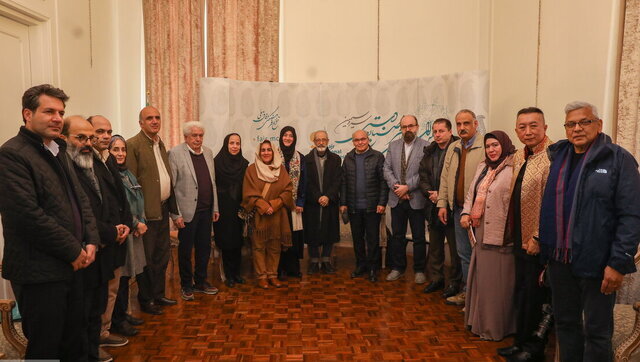Judges announced for 9th International Fajr Handicrafts Festival

TEHRAN- The judges and evaluators for the 9th International Fajr Handicrafts Festival, known as Sarv-e Simin, have been announced.
The panel features renowned international judges including Baby Jurmawati from Indonesia, Roxana Amarilla from Argentina, Sandip Kumar from India, and Sitthichai Smanchat from Thailand, who have come to Iran representing the World Crafts Council, ISNA reported on Saturday.
They join notable Iranian experts such as Ardeshir Mojarad Takestani, a veteran in the field of Persian miniature; Mohammad Taqi Ashouri, a faculty member at the University of Art and a pioneer in academic education; Mohammad Hassan Golchinpour, an expert in metalwork; Mohammad Reza Sharifzadeh, a professor of visual arts; Ardeshir Mirmangereh, the former deputy of visual arts at the Ministry of Culture and Islamic Guidance; Mehdi Amraei, a university faculty member; Zhila Rassam Arabzadeh, a handicrafts expert; Mehdi Mohammadi, head of the handicrafts department at the Soore University; and Arash Heydarian, an active participant in the handmade carpet and handicrafts sector.
The jury’s secretariat will be overseen by Marzieh Torkamanian, a university lecturer, and Mohammed Reza Gerami, a university instructor holding a first-degree artistic certificate, will also serve as a consultant to the judges.
The evaluation process is entirely electronic, and 13 judges have commenced their evaluation of the artworks that have reached the final stage starting from Friday. Ultimately, six selected works will be chosen. In this round of the festival, both foreign and Iranian judges will review the entries over two days.
According to Maryam Jalali-Dehkordi, the deputy minister of handicrafts at the Ministry of Cultural Heritage, Tourism, and Handicrafts, over 7,000 artworks have been submitted to the festival’s secretariat, with 200 selected for further consideration, and a limited number will ultimately be awarded.
She emphasized that the evaluations are completely transparent, based on defined criteria, and conducted in an electronic environment, ensuring thorough checks for every submission. Among the judges, experts in marketing, administration, and academia are present to assess the entirety of the handicrafts chain.
Jalali also mentioned that over the past three years, the Sarv-e Simin trophy has gained international recognition and will be considered in future assessments, while selected works will participate in handicrafts auctions.
Moreover, this year, a "People's Choice" award will be introduced through online voting on the festival's website. Seyyed Amin Sanei Mehri, the executive secretary of the Sarv-e Simin festival, explained that this process has been implemented for the first time to enhance public participation in selecting outstanding artworks.
Visitors to the exhibitions are invited to vote for their favorite piece using available QR codes at the exhibits or via the festival's website at fajr.mcth.ir.
After counting the votes, the artwork selected by the public will be announced at the festival's closing ceremony, where the artist who owns the piece will also be honored. This initiative aims to further promote handicrafts and increase public awareness within this field.
The Sarv-e Simin Handicrafts Festival, held at the Sa'dabad Cultural-Historical Complex, will continue until Monday, February 24.
Of the 8,173 submissions, 7,974 came from 4,378 Iranian artists, while 198 entries were submitted by artists from 20 countries, including Tajikistan, Afghanistan, France, Thailand, the UK, India, Uzbekistan, and Kazakhstan. Tajikistan had the most entries among international participants, while the highest number of submissions from Iran came from artists in Isfahan and Shiraz.
According to organizers, the 9th International Fajr Festival of Handicrafts promises to be a major cultural event, fostering international exchange and celebrating Iran’s rich artistic heritage. It is intended to highlight traditional skills passed down through centuries. It also seeks to inspire future generations to embrace these time-honored practices while facilitating new economic opportunities for artisans.
Experts say that each Iranian handicraft is more than a product; it’s a narrative of history, artistry, and cultural pride, passed down through generations of dedicated artisans.
Available data compiled by the Ministry of Cultural Heritage, Tourism and Handicrafts, Iran’s annual handicraft exports currently stand at about $250 million, with an additional $250 million in informal “suitcase” exports. However, the global market for handicrafts is valued at $770 billion, underscoring a significant opportunity for growth.
Currently, a selection of 13 cities and three villages in Iran have been registered by the World Council of Handicrafts as “world cities of handicrafts.”
SAB/
Leave a Comment